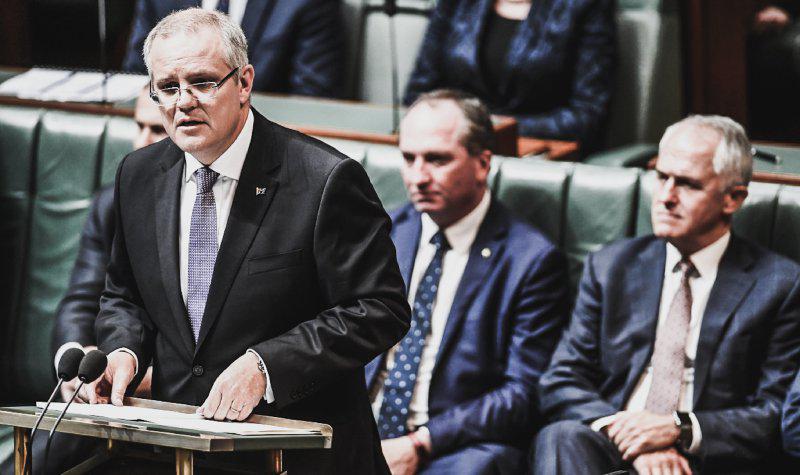Industry Leading Social Infrastructure Lawyer On Why Affordability Should Be More Than A Discussion About Buildings
TUD+ MEMBER CONTENT
In the lead-up to our upcoming event series 'Let's Get Affordable - Opportunities For Developers In Responding To Australia's Housing Affordability Crisis' in Brisbane, Sydney and Melbourne, The Urban Developer approached leading social infrastructure lawyer, Heather Watson (McCullough Robertson) to provide a breakdown on what the key components and focus areas are within the Affordable Housing Sector.
More Than A Discussion About Buildings – Housing Contributes To Social Cohesion
Housing affordability has been the topic of much debate and discussion recently. Whether as a home owner or renter, security of tenure as a home occupier is of significant importance.
From a social perspective, housing provides a stable base from which Australians can participate meaningfully in their communities. Housing assists with forming healthy family relationships and security in retirement, and promotes and improves employment, educational and health outcomes.
From an economic perspective, it is well recognised that housing has a significant impact upon investment, productivity and participation, as well as consumption and saving trends across the economy.
In its simplest form social cohesion implies social togetherness - in a community sense, a place where everyone generally gets along, shares values and a standard of living and feels accepted and worthy. By contrast, high levels of poverty or unemployment and under-employment, debt-stressed families and homelessness are all factors that undermine social cohesion and are common when affordable housing is lacking.
It is in the interests of the whole community to strive for social cohesion and it is incumbent on all levels of government to respond to issues of poverty, disadvantage and inequity in some way.
Role Of Government

Governments have access to a range of policy and economic levers that impact the demand and supply of affordable housing. Other influencers are cultural and behavioural and these also can be shaped by government policy.
For the Australian government, issues of tax policy, financial regulation, income support, infrastructure development and agreements with the States under national housing frameworks are all contributors.
States also have tax policy influence, as well as control of planning systems, infrastructure development and operational responsibility for responding to social housing needs.
Local governments also have a role to play given they deliver services such as water, waste and waste-water treatments, service roads and build new communities, some of the most basic requirements of life. They can shape economic, environmental and social outcomes into the future through local and regional plans, laws and decisions.
In addition, all governments often have access to underutilised land that can make a valuable contribution to emerging collaborative models that both contribute to increasing affordable housing supply as well as other forms of community infrastructure.
New Investment Opportunities To Increase Supply Of Affordable Housing

The Constance Street Affordable Housing Brisbane, Image: Christopher Frederick Jones[/caption]
Numerous reports that reflect the statistics relating to housing in Australia confirm house prices are approximately 4-5 times the average annual household earnings. In capital cities, particularly Sydney and Melbourne, median house prices are approaching or exceed $1 million. This has a flow on affect to rental prices, resulting in a massive shortfall of housing supply that is affordable and available to the lowest income households, resulting also in increased homelessness.
In a discussion paper released by the Australian Council of Social Services in 2015 entitled: An Affordable Housing Reform Agenda, the extent of the problem is detailed and makes recommendations including tax reform, investment in new affordable housing stock, innovations in finance models, changes to urban planning, land and building regulation and increased Commonwealth Rent Assistance.
In January 2017, Australian Treasury issued a Discussion Paper called: “Social Impact Investing” where it sought to identify ways the Australian government could develop the social impact investing market, particularly to encourage private sector investment combined with co funding from the State and Commonwealth to respond to meeting the increasing cost of social need. Affordable housing infrastructure was specifically named as one of the targets for this new style of funding.
In March 2017 the Turnbull Government announced the establishment of an Affordable Housing Implementation Taskforce, tasked with developing an affordable housing bond aggregator model for consideration by the Commonwealth and States and Territories.
Bipartisan support for the planned bond aggregator model, that would match institutional funders with the growing community housing industry and provide access to cheaper and longer term debt, is a good start. However, potential funders and the housing industry alike want to see increased government investment to reduce the cost of both buying and renting and fund the shortfall between the bonds that can be repaid with affordable rents and the initial cost of providing the new dwellings.
Shared Equity Opportunities
In Victoria, where Melbourne house prices are second only to Sydney’s housing bubble, the Victorian Government has announced two new initiatives to help first home buyers. In a shared equity scheme, the State Government will co-purchase with 400 home buyers who meet the criteria for a bank loan but lack a big enough deposit. The pilot scheme will be introduced from 1 January 2018 with an initial allocation of $50million over 2 years.
The scheme, HomesVic, will apply to both existing and new homes, and will be administered through State Trustees, which has the necessary financial licences. HomesVic will take an equity share of up to 25% and eligibility will target applicants with incomes of up to $75,000 for singles, or up to $95,000 for couples or families. Buyers will need to have a 5% deposit.
When the properties are sold, HomesVic will recover its share of the equity and reinvest it in other homes. In a further and separate initiative, the State Government will contribute $5 million to bring a national, community sector, shared equity scheme, Buy Assist to Victoria.
Run by the National Affordable Housing Consortium, the Buy Assist model will assist low to medium income, waged employee households to get a foothold in the property market. It has similar eligibility criteria and a requirement for bank loan eligibility and is expected to deliver up to 100 shared equity homes in Victoria.
Buy Assist is similar in principle to the HomesVic scheme, but is based on a private sector model built around partnerships with developers and accessing first mortgage lending from mainstream banking institutions.
Commonwealth Budget Announcements 2017

Consistent with a number of recent advance announcements by the Australian government, the Budget contained a number of new initiatives which reflect a significant investment by the Commonwealth, in both existing funded arrangements as well as some new investment initiatives.
The Australian government will establish the National Housing Finance and Investment Corporation whose role will be to operate an affordable housing aggregator to encourage greater private and institutional investment with the intention that this will provider cheaper and longer term finance for the community housing sector, as has been the experience in the United Kingdom, for example.
It will also have a role in assessing applications for financial assistance from local governments to access a newly established National Housing Infrastructure Facility (NHIF) in order to finance critical infrastructure required to speed up the supply of new housing. $1 billion over 5 years is to be made available to the NHIF specifically to finance local governments through concessional loans, equity investments and grants. This finance will be applied to such infrastructure as transport links, power and water infrastructure and site remediation works.
A further commitment through the Budget announcement reflects the Australian’s intent to ensure that it’s surplus land holdings are identified and applied to the development of affordable housing where that land is no longer required. Of interest to local communities, as from 1 December 2017 the Australian will publish a registry of Australian land holdings online, including mapping their locations. This will enable communities including local government, to be proactive in identifying opportunities to develop affordable housing on currently held Australian land holdings.
A number of other policy and funding initiatives are also targeted through the budget announcements at removing barriers for individuals, both renters and home owners, to access the targeted increased housing supply. These incentives include:
For potential investors in affordable housing, further incentives were included in Budget announcements including:
an additional 10%GST Discount to resident individuals investing in qualifying affordable housing. The investment must be provided as below market rates, to an eligible tenant, through a registered community housing provider and for a minimum period of 3 years
new rules will apply for Managed Investment Trusts to acquire, construct or redevelop property to hold for affordable housing. The intention is to encourage pooling of investments by individuals and will receive the additional CGT discount through this form of investment as well
As with many complex societal problems, solutions to our affordable housing challenges lie not in a single solution or with a single organisation or part of government. Rather the solutions are found when we can find ways for the respective contributors to work together with a common goal and intent.

About the Writer – Heather Watson
Heather Watson is a partner at McCullough Robertson and will be presenting a keynote at The Urban Developer's upcoming national event series on the current state of play in the affordable housing sector and explore the current and future opportunities for private developers along with the business models, planning framework and legal structures that developers can consider to unlock greater value in their developments.
Click The Below Links To Register













